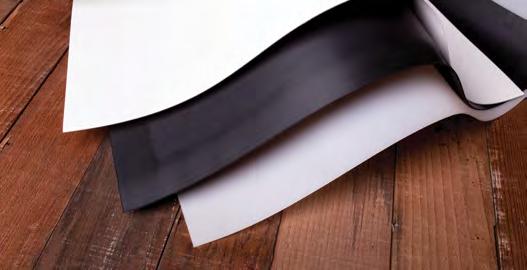S N O W B O A R D M AT E R I A L S P O W E R P LY T O P S Most Arbor Snowboards are made with a sustainably sourced wood or bamboo topsheet. We refer to this technology as a Power Ply. The natural grain creates the style we’ve been known for since we launched in 1995. Less recognized is how the technology improves the strength, durability, and return of our snowboards.
The Power Ply works like an added layer of
The finished topsheet is at last ready to be built
fiberglass. During construction, the natural wood
into a snowboard. In the end, the process makes
or bamboo fibers are turned into a composite
Arbor Power Ply deigns the most labor–intensive
layer inside the board; but the process takes time.
snowboards on the market. The resulting performance, board life, finish quality, reduced
We start with a log that must be soaked so that it can be sliced or “veneered” into sheets, which
reliance on man– made glues, coatings, and composites are worth the extra effort.
are then assembled into “faces,” backed with a special fleece material, precision sanded, and pre –laminated to a protective foil, made in part from natural castor bean oil.
B A S E M AT E R I A L EXTRUDED BASE: A tough, user–friendly extruded base that delivers lighter-weight performance.
SINTERED BASE: A higher molecular weight, sintered base that provides added durability and speed.
GLASSING B I A X G LAS S I NG A biax over biax lay–up that’s designed for park and street inspired all-mountain riding. Also creates a good platform for learning.
M I XED G LAS S I NG A triax over biax lay–up that’s best for versatility: pow, backcountry, groomers, jumps, and more.
T R IA X G LAS S I NG A triax over triax lay–up that’s ideal for on– edge performance: steeps and speed.

